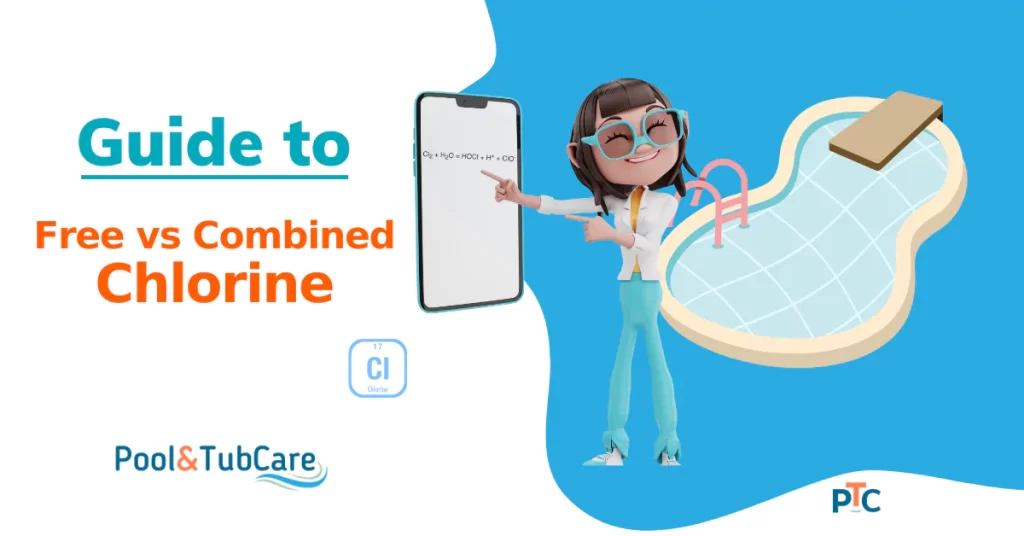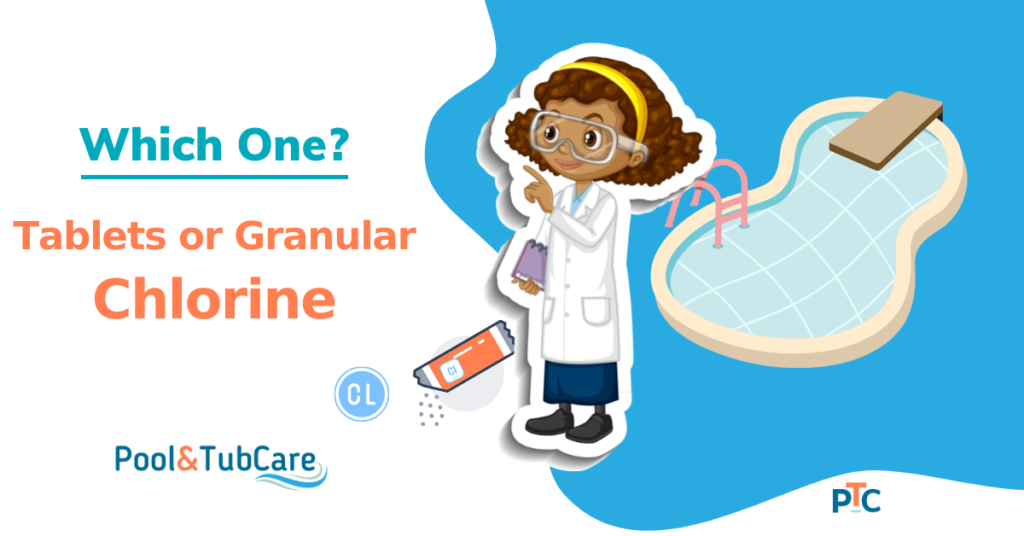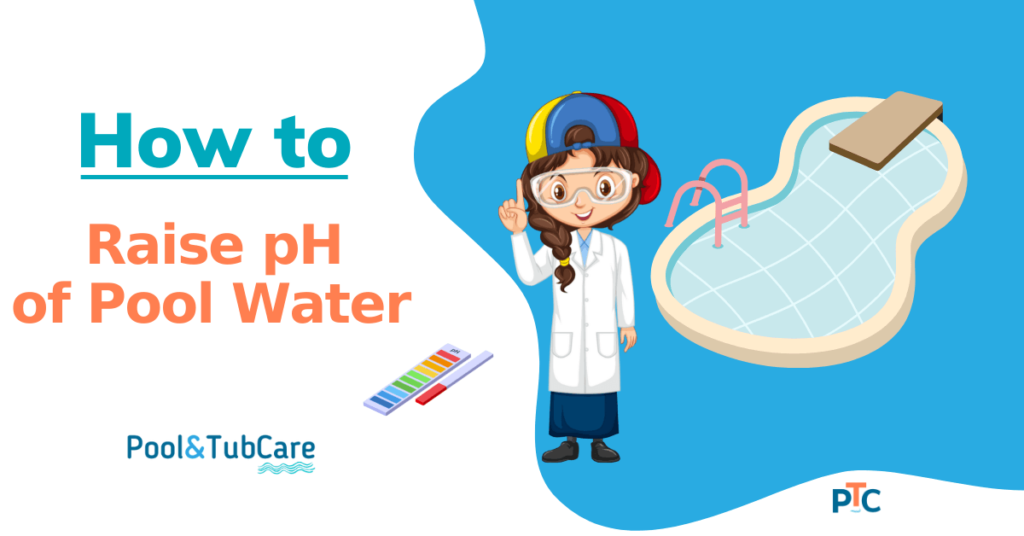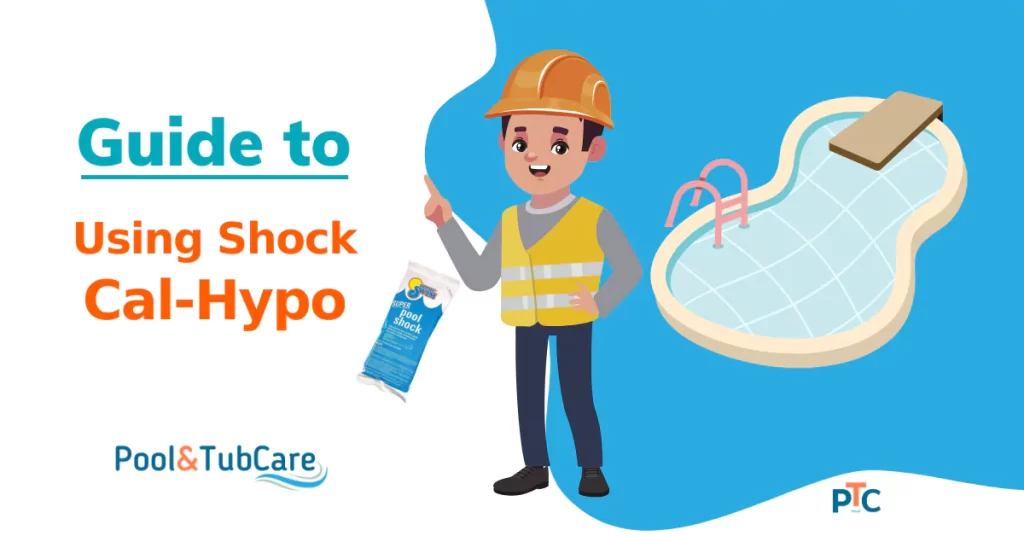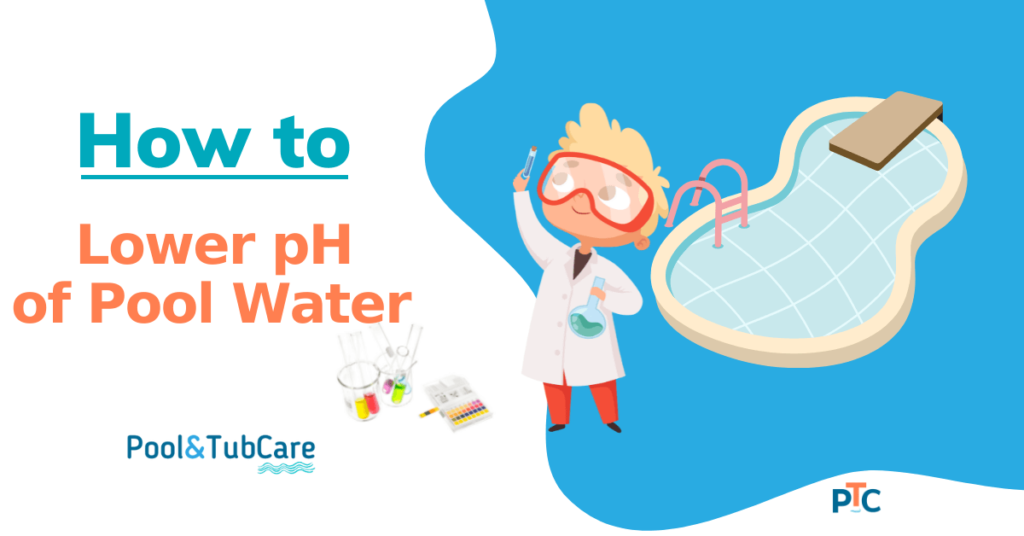If you are reading this, you probably already know chlorine is the single most important chemical for your pool maintenance.
Chlorine is what keeps your pool clean by killing bacteria and algae and breaking down other organic waste.
You might have heard about the terms free chlorine, combined chlorine, and total chlorine. It can become pretty confusing, but it is not that difficult to understand if you understand their importance.
Levels of free chlorine as well combined chlorine matter individually.
That is why you need to know the difference between free chlorine and combined chlorine so that you can measure them and keep your pool clean.
I will take you through each of these terms and how they are important for your pool.
What are Free, Combined, and Total Chlorine
Chlorine kills bacteria and algae, but not all forms of chlorine are capable of doing that. Only free chlorine can work as a sanitizer.
These words (“free and combined chlorine”) are thrown around quite a lot in the pool industry. If you are unsure how they are different, we will get that sorted today.
Free Chlorine (FC)
When you add chlorine to the pool, it reacts with water and dissolves into a weak acid, hypochlorous acid (HOCl), and hypochlorite ions (ClO–), releasing free hydrogen in water.
This is the chemical reaction that happens:
Cl2 + H2O = HOCl + H+ + ClO–
Both HOCl and ClO– are potent oxidizers and together are called free chlorine, as literally, they are the ones that are free to sanitize your pool.
HOCl is 40 to 80 times more potent in killing pathogens, but they are both important.
Free chlorine is toxic to microorganisms like algae and bacteria. They have oxidizing properties that break down organic waste like human sweat and other oils.
When measuring, you should be concerned about free chlorine levels as they are the ones doing the job.
The recommended concentration of free chlorine is from 1ppm to 3 ppm. When you add more chlorine to your pool via chlorine tablets or granules, you increase the levels of this free chlorine.
When free chlorine starts reacting with the bacteria and other organic waste, they form another form of chlorine called combined chlorine.
Combined Chlorine (CC)
When free chlorine reacts or combines with organic waste like ammonia, nitrogen, body oils, pee, and skin cells, it changes into a combined chlorine form.
Combined chlorine is bound to waste and is no longer available for sanitizing the pool. It has already is done its job and waiting to be cleared out.
This bound form is also known as chloramines, and the district odor of chlorine pools is due to these chloramines and not free chlorine.
So, if you next time smell a strong smell in your pool, your pool is not properly sanitized.
This chlorine is not important for sanitization, but it is still important to keep track of it, as very high levels of chloramines can interfere with the functioning of free chlorine.
Combined chlorine levels should be less than 0.2 ppm and never more than 0.5 ppm.
When the levels of combined chlorine get above 0.5 ppm, you need to refill some parts of your pool with fresh water or shock your pool to reach the breakpoint of chloramines.
Total Chlorine (TC)
As the term suggests, total chlorine means all the forms of chlorine in a pool together.
This means free chlorine and combined chlorine are together called total chlorine.
It is an important term as many test strips calculate only free chlorine and total chlorine.
You can find out the combined chlorine by reducing free chlorine from total chlorine.
Ideal Chlorine Levels for Pool
The ideal amount of free chlorine in water should be between 1-3 ppm.
Check the chlorine levels daily or on alternate days to keep a tab. Levels of free chlorine should never get below 1ppm. Below 1ppm of chlorine, many bacteria can grow in pool water.
Because of higher usage, most commercial pools have chlorine levels between 3-5 ppm.
Swimming is safe in the water with chlorine levels up to 5 ppm, but anything over that can be dangerous.
An ideal clean pool will have zero combined chlorine as it has no impurities. The amount of combined chlorine increases as free chlorine neutralizes more contaminants.
Ideally, combined chlorine should be less than 0.2 ppm and never above 0.5.
And total chlorine should be ideally equal to free chlorine. That means all of your pool chlorine is available to do the job.
Related: Ideal water chemistry for your pool!
How to Check Chlorine Levels in Your Pool
There are several ways to check the chlorine levels in your pool, and a test strip is the most common method.

To use a test strip, dip the test strip in water for a few seconds before comparing the developed color of the test strip to the chart that came with it.
A chlorine test kit can also be purchased at a pool supply store, and these kits typically include a liquid chemical and a color chart.
Follow the steps on how to use the kit that come with the kit.
An electronic tester can also be used to monitor chlorine levels. These testers cost more than test strips or test kits but are more accurate.
If you have frequent chemical imbalances, then taking your pool water sample to a store and getting a second opinion might be worth the cost.
Keep Your Chlorine “Free” For Doing Its Job
At the end of the day, what matters is how much free chlorine you have in your pool for doing the dirty job of clearing pathogens and organic waste.
Keep regularly testing to ensure that the levels of free chlorine stay in the 1 to 3 ppm range and combined chlorine stays below 0.2 ppm.
If they get out of hand, you may face serious problems like bacterial growth and algal bloom, which will take much more effort to rectify than doing your regular chlorine testing.
So, keep giving your pool that free chlorine, and it will keep giving you relaxing time without any worries.
FAQs
Here are a few frequently asked questions.
What should I do if total chlorine is higher than free chlorine?
Total chlorine is a mix of free chlorine and combined chlorine. A difference of more than 0.5 ppm between total and free chlorine means your pool has a lot of chloramines and waste. You need to shock your pool to get rid of combined chlorine.
How do I raise the free chlorine in my pool?
The only way to increase free chlorine in your pool is by adding more chlorine, either stabilized chlorine like trichlor tablets or unstabilized chlorine like sodium hypochlorite. If you have a salt pool, you can increase the production of chlorine by increasing the setting in the chlorinator.
Will shock raise free chlorine?
It depends on the type of shock you are using. If you are using chlorine-based shock to reach the breakpoint, then YES shock will increase the free chlorine levels.
If you decide to use non-chlorine shock, then you won’t be adding chlorine to your pool. Hence, free chlorine levels will not increase, but combined chlorine levels will go down.
Why is free chlorine low in pool?
If you are adding chlorine and still free chlorine levels are not going up, you might need to use chlorine stabilizer to protect free chlorine from the sun. Another reason might be chlorine lock or demand, read this article to sort that out.
Does adding chlorine raise or lower pH?
If you add tablets, which have acidic pH, then the pH of the water will decrease, but if you are using liquid sodium hypochlorite, it will release NAOH, which can increase the pH.

